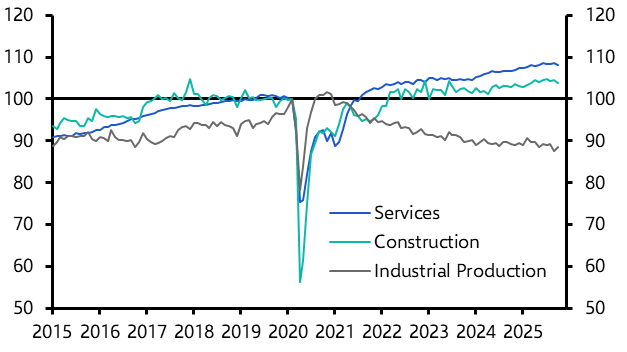The past several days has seen a substantial repricing by markets in favour of earlier policy tightening by central banks. This hawkish shift was helped by the Bank of Canada, which last week called time on its QE programme and indicated that it could raise interest rates as soon as the second quarter of next year, and the Reserve Bank of Australia, which allowed bond yields to breach its target.
This week the focus will be on the US, where the Fed is set to announce the start of tapering, and the UK, where the markets expect the Bank of England to begin raising interest rates from their current record low of 0.1%. But while the focus of the past few weeks has been on when central banks will start to raise rates there’s a much larger question about how much tightening they will ultimately need to deliver.
It goes without saying that the answer will be determined to a large extent by the outlook for inflation. While the forces that have pushed up inflation this year are still mostly transitory, a combination of growing supply shortages and higher energy prices mean that it is likely to fall back more slowly than we had initially anticipated next year. At the same time, underlying inflation pressures are building in some, but not all, economies. The risks are especially acute in the US.
However, while the outlook for inflation will dominate central banks’ decision-making they will also have to consider at least two other things.
The first is that asset prices around the globe are now underpinned by the expectation that real interest rates will remain low. If that expectation shifts suddenly it could trigger a dramatic repricing across asset markets. This is true of financial assets such as bonds and equities, but also of assets like housing. What’s more, while the economic backdrop matters, it may not take a big move in interest rates to trigger asset price falls. Our property team estimates that, under reasonable macroeconomic assumptions, a rise in interest rates to just 1.5% in the UK could cause house prices to fall.
A modest drop in asset prices won’t necessarily concern central banks. But a large or more disorderly fall in asset prices could lead to a tightening in financial conditions that at best would threaten the recovery and at worst might undermine financial stability. Either way, it’s not a risk that central banks can ignore.
The second, and related, concern that central banks will need to keep in mind is that ultra-low (currently negative) real interest rates hold the key to debt sustainability. As Chart 1 shows, total global debt has ballooned to 250% of world GDP in the wake of the pandemic. While there are differences across countries and sectors, a common theme is that the fiscal costs of COVID have pushed up public debt burdens across all major economies.
Chart 1: Total Global Debt* (% of global GDP)

Sources: BIS, Capital Economics; *Gross non-financial sector debt of BIS reporting countries.
Of course, fiscal policy is the domain of governments rather than independent central banks. But fiscal sustainability currently rests on the markets’ belief that real interest rates will remain negative for several years to come. A sharp increase in government bond yields would have a destabilising effect on the real economy that once again central banks could not ignore. The risks are particularly great in the euro-zone, where super-loose monetary policies have played a key role in containing bond spreads between different countries.
The upshot of all of this is that even if inflation concerns cause policymakers to want to raise interest rates, other factors may limit their ability to do so in a significant way. This leaves central banks treading an increasingly fine line.
A smooth path ahead depends on inflation dropping back next year, thus allowing central banks to withdraw support gradually and, to the extent policy is tightened, ensuring the scale of tightening is modest. On balance, this is still the most likely outcome. It may mean tolerating slightly elevated rates of inflation (say, 3% or so in the US) but, as we argued in our latest Global Economic Outlook published last week, under these conditions the sky won’t fall in on the world economy.
The much bigger headache comes if the current inflation shock is larger or more permanent than we currently anticipate. In previous research, we’ve suggested that the economic costs start to mount when inflation averages around 5% for a sustained period. This would be the stuff of nightmares for central banks – on the one hand, it would necessitate a much larger monetary policy response, but on the other that policy response would cause much greater market dislocation that could undermine financial stability. Faced with this threat, central banks may reason that a small increase in rates now will avoid the need for more drastic action along the line.
In case you missed it:
- Our commodities team argues that a tightening supply squeeze will delay the decline in energy prices.
- In their latest Outlook, our EM team concludes that the best of the recovery in emerging economies is behind us and that growth will slow over the coming quarters.
- As COP26 gets underway in Glasgow, a reminder that tackling climate change needn’t mean sacrificing economic growth.



